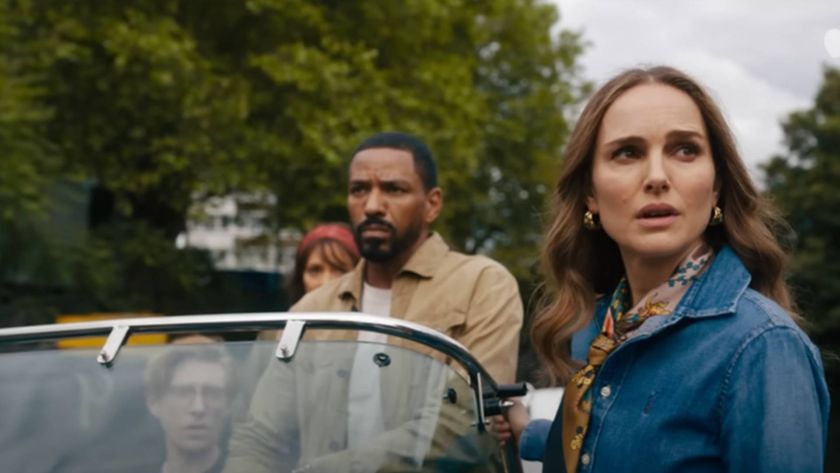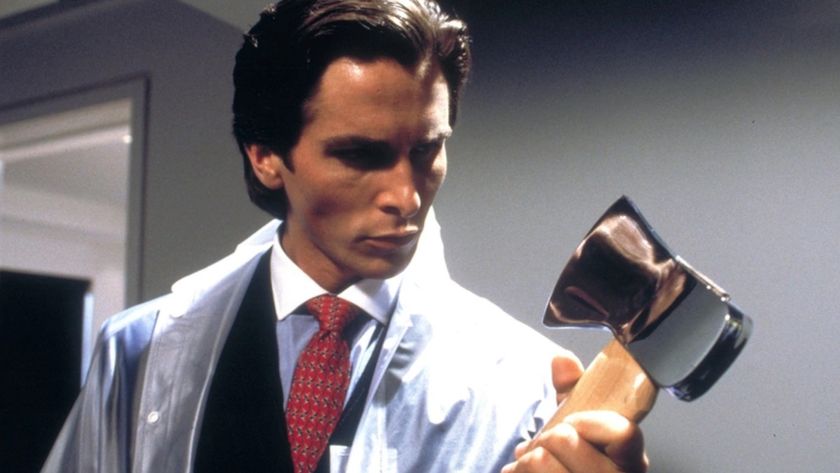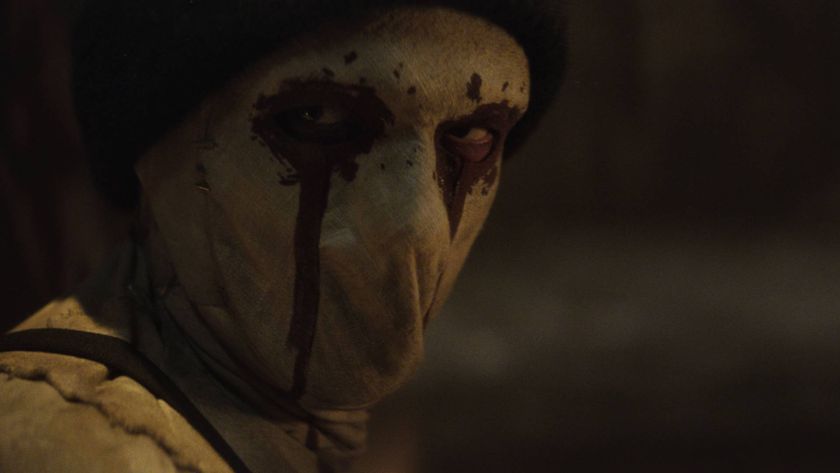25 alternate movie endings better than the original
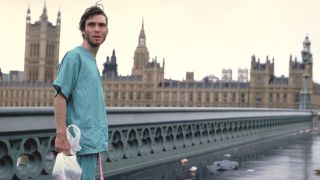
Oh, what could have been...
It's hard to know where to end a movie. Does the hero ride off into the sunset, ready to face another day of ass-kicking... or does that tie things up too neatly? Perfect conclusions are tough nuts to crack. There's much for directors to consider - loyalty to source material, sequel possibilities, and, of course, does the ending allow for a cheeky post-credits sequence?
Only one option remains: forget the marketing budget and blow it all on shooting several alternate versions! Thanks to the surge of extras now accompanying most home video releases many of these previously-unseen endings are now accessible to cinephiles and some of them are much better than the originals. Read on and discover the endings we wish the directors had gone with, but beware, there are spoilers ahead.
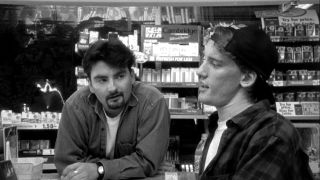
25. Clerks (1994)
The movie: Kevin Smith's debut spends 24 hours with Dante, a convenience store worker, and his best friend Randal, a video store worker. The pair act like their lives are shitty but really, they get paid to hang out with their besties, analyse the minutiae of Star Wars, play hockey on the roof, and, uh... disrupt funerals.
The original ending: The chaotic day reaches a close as Dante sits at the counter. The door opens. "You're closed!" shouts Randal, tossing his pal the homemade "I assure you we're OPEN" sign from the front of the store.
The alternate: Robbers break into the store and shoot Dante. He dies.
Why it's better: It's hard to say "better" when discussing the senseless murder of a character. Kevin Smith himself believed movies that end with the death of a character tend to make an impression and he's spot-on: it is completely unexpected. It also ties in nicely to Randal's earlier comment about The Empire Strikes Back "ending on such a down note."
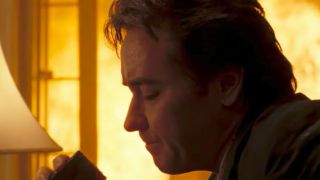
24. 1408 (2008)
The movie: Another corking Stephen King adaptation featuring a haunted hotel with one particularly evil room. John Cusack's jaded supernatural journo spends a night in the infamous room 1408, a legendary suite that's led many guests to off themselves. Will he survive its peril? Will he go crazy with an axe?
The original ending: It was decided in the US that the first ending was way too dark so this less macabre offering was used instead. Mike sets the room ablaze, gets rescued and reconciles with his wife. At first she doesn't believe his supernatural tales until she finds his tapes from the room, and hears the recorded conversation he had in 1408 with their daughter. Their daughter who died prior to the events of the movie.
The alternate: On the Blu-ray edition - and the regular version released in countries other than the US - Mike burns up in the fire. It's actually the hotel manager Olin (Samuel L. Jackson) who listens to the tape of Mike talking to his daughter, who we see him reunite with in the afterlife.
Why its better: After all the false endings where we think Mike's escaped, but he hasn't, it's about time the whole charade ends. Seeing him go down with the ship has eerie echoes to The Shining too...

23. The Lion King (1994)
The movie: Part of the Disney renaissance and a vessel for a series of epic showstoppin' tunes, The Lion King follows the circle of life within the pride lands of Africa. Scrappy young lion Simba must learn the harsh lessons of the animal kingdom. You'll laugh, cry and sing along a lot.
The original ending: Once Simba discovers how shoddy Scar has been at keeping things in order at Pride Rock - there's no water and hyenas are now kickin' it there - he decides enough is enough. Simba boots Scar off a cliff where he's shortly thereafter eaten by hyenas after selling them out.
The alternate: Scar tricks Simba and throws him off Pride Rock. Scar stands atop the Rock and laughs maniacally as the flames eventually consume him.
Why its better: It's absolutely fucking bananas. Disney's got a tendency to sneak weirdly bleak subtext and imagery into their movies but this is explicit. Yes, Simba lives, but Scar dies laughing like a madman whilst on fire. That's dark.
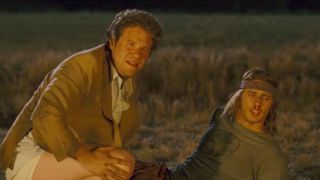
22. Pineapple Express (2008)
The movie: The worst case scenario for when you accidentally get a seriously awesome strain of bud. Dale (Seth Rogen) scores a smoke of pineapple express from his dealer Saul (James Franco) before dropping the roach at a smokin'-hot crime scene where he's just witnessed a cop kill someone...
The original ending: Celebrating their luck after a batshit day, Dale, Saul and Red tuck into a hearty breakfast feast and chit chat about the events of the previous 24 hours. Saul's grandma rolls up and drives them to hospital and everyone lives happily ever after.
The alternate: Dale and Saul survive a huge shoot-out, a bombing, and basically, a load of violence that would make any normal person ruin their underwear, only to get machine-gunned down at the last second.
Why its better: There's no way this pair could ever top such an epic 24 hours. Plus, their cute hand-holding confirms the bromance. They really did love each other!
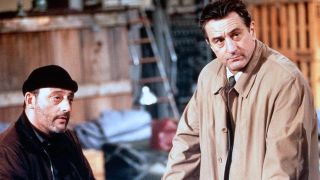
21. Ronin (1998)
The movie: John Frankenheimer's late '90s spy thriller made charging around European capitals in tiny cars the height of cool way before Bourne. Robert De Niro and Jean Reno's ex-special ops mercenaries get tied up in a complex web of insane driving maneouvres and secretive meetings in pursuit of an important briefcase.
The original ending: Sam (De Niro) and Vincent (Reno) talk over coffee while the restaurant radio announces that peace has been declared between Sinn Fein and the British government. This means Sam might have a shot with IRA operative Deirdre (Natascha McElhone)! But she doesn't show up. Bah.
The alternate: She turns up outside the cafe, only to turn around and make like she's about to leave. That is until an unmarked van shows up and she's snatched right off the street and bundled into the back.
Why its better: It adds a real sting to the tail of the flick. Sam's left wondering why Deirdre never showed up but we know that things aren't quite as joyous as they seem. Who took her? Was it the CIA? The IRA? The PTA? We'll never know.
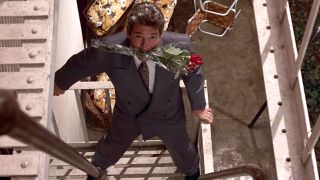
20. Pretty Woman (1990)
The movie: Richard Gere's impossibly single businessman Edward picks up Julia Robert's hooker with a heart of gold Vivian. After a first encounter he offers her $3,000 if she keeps him company for a whole week. Presumably to iron his impeccable trousers.
The original ending: He arrives at her apartment in a limousine, with a rose no less, and sweeps her off her feet. They vow to never exchange money before nookie and live happily ever after.
The alternate: Originally scripted as a bleak drama called $3,000, that version saw Edward drive up to Vivian's spot on Hollywood Boulevard and drop off an envelope of promised cash instead of a rose. He gets into his car as she pounds on the windscreen whilst yelling about how much she hates him. The scene ends with Vivian scampering after her money in a fit of tears.
Why it's better: It's completely unexpected. Granted, this ending follows an entirely different film (that first script was totally rewritten into a rom-com) but it nevertheless would have shaken up a conclusion that we suspected all along.
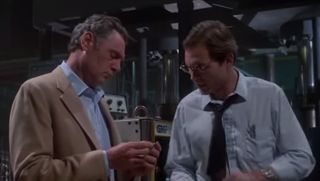
19. The Terminator (1984)
The movie: Skynet, a self-aware computer network in command of the world, sends a cybernetic organism known as a Terminator (Arnold Schwarzenegger) back in time to 1984 to kill the mother of future resistance leader, Sarah Connor (Linda Hamilton). As it happens her son sends back a human soldier Kyle Reese (Michael Biehn) to protect her.
The original ending: After a lengthy pursuit, The Terminator tracks Sarah and Kyle down in a factory where Kyle perishes and Sarah traps the evil tin man in a hydraulic press. He's terminated.
The alternate: The same as above but with an added scene. Unbeknownst to the police who arrive at the factory, a bunch of Cyberdyne suits are spotted picking through the wreckage for salvageable parts of the Terminator.
Why it's better: Including a subtle shot of the factory's signage - Cyberdyne Systems - lines up things perfectly for Terminator 2, where it's explained that Cyberdyne retrieved the seriously advanced tech from the wreckage of its property. In short, this ending sets up T2.
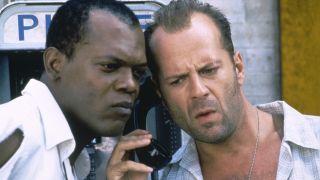
18. Die Hard With a Vengeance (1995)
The movie: Seven years after defeating Hans Gruber, Lieutenant John McClane (Bruce Willis) one-liners his way through more terrorist activity in New York City at the hands of Gruber's terrorist brother Simon (Jeremy Irons). He wants revenge, see.
The original ending: In a careless moment, Gruber gives away his location to McClane on an aspirin bottle, leading the grizzled Lieutenant to the tyrant's lair in Canada. A major scuffle ensues, Gruber thinks he's escaped in a swanky helicopter - but McClane shoots out a power line. It lassoes the aircraft and sends the villain to his fiery death.
The alternate: McClane doesn't shoot down the helicopter, and Gruber escapes with all the gold after he double crosses his partners (no honour among thieves, eh?) With all of Simon's past crimes pinned on McClane - who loses his job as a result - the worn out cop tracks down Gruber, entices him into a game of McClane Says and blows him up with a rocket launcher.
Why it's better: Perhaps betraying the central conceit of the series - that justice is always served and the baddies never get away - it nevertheless offers a rare alternative. What might happen in a classic action franchise if... the bad guys do win.

17. The Fly (1986)
The movie: David Cronenberg's gruesome body horror charts the outcome of a science experiment gone awry. Jeff Goldblum stars as eager inventor Seth Brundle, who fires up his teleportation device for the first time alone. Which is silly, because everyone knows you're not supposed to test telepods without adult supervision.
The original ending: Seth's warped mind leads him to initiating a new experiment, wherein a third telepod housing his lover Veronica (Geena Davis) - and their unborn baby - would be included to fuse the three of them together.
Veronica's former boyfriend Stathis Borans (John Getz) severs the connection to the third pod, but Seth has already gone through. He emerges as a Man-Fly-Telepod hybrid and begs Veronica to kill him. She does.
The alternate: One of four additional endings, this one finds Veronica alone in bed sometime after Seth's death. She dreams of a baby born with butterfly wings.
Why it's better: Serving as closure to Veronica's earlier dream about birthing a maggot baby, this fantastical ending suggests she's finally achieved some degree of peace after the trauma of blowing off her boyfriend's head. And who doesn't love impossibly bizarre inter-species newborns?
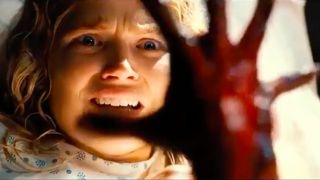
16. Carrie (2013)
The movie: A retread of the 1976 Brian De Palma original, Kimberly Peirce's 2013 remake of Carrie follows bullied teenager Carrie White (Chloe Grace Moretz) whose entrance into womanhood kickstarts a symptom besides the usual cramps - telekinesis.
The original ending: Carrie and her zealous mother Margaret (Julianne Moore) both die in their home. Sue Snell (Gabriella Wilde), the one high schooler who didn't detest Miss White, narrowly avoids a similar fate and subsequently visits Carrie's grave. She plants a single rose on the headstone, and the surface of grave begins to crack.
The alternate: Sue is in the delivery room giving birth to her child, when instead of a pink baby... the bloody hand of Carrie White emerges from her nethers! Mrs. Snell comforts her screaming daughter whose gaze is fixed on a vision of Carrie - bloodied in her prom dress - cradling her infant.
Why it's better: Its marginally better than the theatrical release, purely because its so damn weird in its attempt to top the classic De Palma ending. Wonder if this was was filmed in reverse too.
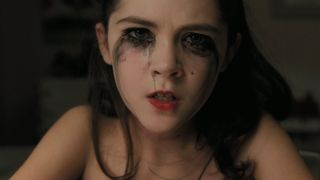
15. Orphan (2009)
The movie: Kate (Vera Farmiga) and John Coleman (Peter Sarsgaard) adopt Russian girl Esther (Isabelle Fuhrman) from the local orphanage. Her precocious behaviour is finally explained when it is revealed she's actually a murderous 33-year old adult suffering from a rare growth-stunting condition.
The original ending: Kate rescues her son Max after Esther tries to kill him, and the pair wind up on an icy lake. A crack in the ice causes them both to plunge into the freezing depths, wherein Esther pleads for her life. Kate replies with a swift kick - sending the pint-sized killer to a watery grave.
The alternate: Once Kate rescues Max, Esther returns to the house and tries to make herself presentable for the flood of cops exploring the house. She appears at the top of the stairs, and introduces herself. In an eerie manner that's entirely expected from an adult trapped inside a child's body, the effect of Esther's coy flirtatious behaviour suggests she just might get away with everything...
Why it's better: It's just plain creepy, and is a pleasant change from the typical justice ending wherein the bad guys get carted off to jail.
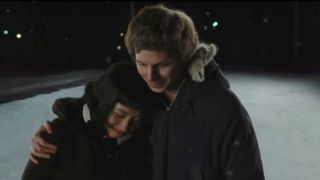
14. Scott Pilgrim Vs. The World (2010)
The movie: Scott Pilgrim (Michael Cera) will do whatever it takes to win the heart of Ramona Flowers (Mary Elizabeth Winstead), which includes battling all of her evil exes in a video game-inspired series of fights.
The original ending: After successfully defeating Ramona's back catalogue of scorned lovers, Scott unites with her and wanders off for a beautiful evening.
The alternate: Realising that he's actually still smitten with his ex, Scott bids farewell to Ramona and hooks up with Knives (Ellen Wong).
Why it's better: All the heartache, pain and suffering Ramona put poor Scott through and he decides to stay with her anyway? While not the healthiest option for a future paramour, Knives is far better suited to Scott. In his alternate ending Edgar Wright did what John Hughes couldn't do for Pretty In Pink - he let the geek get the geek.
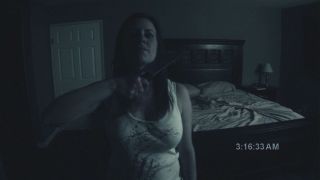
13. Paranormal Activity (2009)
The movie: Oren Peli's found footage blockbuster chronicles a couple - Katie (Katie Featherston) and Micah (Micah Sloat) - as their lives are affected by an invisible entity. Lucky that Micah set up all those cameras around the house then.
The original ending: Katie wakes in the middle of the night, heads downstairs and screams for Micah who bolts out of bed and joins her. Her screams stop and heavy footsteps are heard climbing the stairs. Appearing in the doorway, Katie throws Micah's corpse at the camera before she runs at it, bearing an evil grin. Her face then turns into a demon a second before the screen cuts to black.
The alternate: Everything is the same except for when Katie re-enters the bedroom. Covered in blood and clutching a knife, she walks slowly up to the camera where she silently draws the blade across her throat.
Why it's better: Alright, so it's pretty bloody but in terms of dark, simmering horror it works more effectively than lobbing a fake Micah at the camera to try and get one final jump scare in.
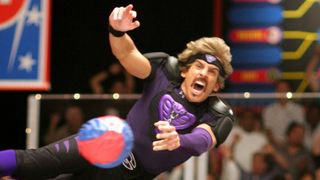
12. Dodgeball: A True Underdog Story (2004)
The movie: Peter (Vince Vaughn), the owner of a small gym called Average Joes, assembles a hapless squad of amateur dodgeballers to enter the national dodgeball competition. They eventually compete in the championships against White Goodman (Ben Stiller)'s team of uber-macho grunts from GloboGym.
The original ending: The Average Joes win! Peter becomes a multi-millionaire after selling his gym using the proceeds to bet against his own team. The underdogs emerge victorious, with Peter buying out GloboGym and firing the disgruntled White.
The alternate: It's the final game and the Average Joes are ahead and about to successfully beat GloboGym. At the last second White Goodman swoops in and bags the winning points right from under their noses. A series of shots spool out, showing Peter's team looking bruised and defeated, while Goodman's crew engage in a glut of ceremonious bromance-y hugs.
Why it's better: A true underdog ending would have rung more true with the Average Joe's loss. The filmmakers even snuck in a quick jab at the test audiences who put the kibosh on their intended ending, with a post-credits shot of a tubby White Goodman addressing the camera, "Yeah, hope you're all happy now," he says. "Good guy wins, bad guy loses."
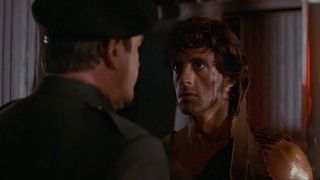
11. First Blood (1982)
The movie: A harrowing thriller that delves into the minds of Vietnam vets returning home from war, it focuses on a returning soldier who becomes targeted by a small town sheriff who doesn't like the cut of his gib.
The original ending: Shot as a result of test audiences dislike of the first version (see below), John Rambo (Sylvester Stallone) ends up at a police station alongside Colonel Trautman (Richard Crenna), to whom he confesses his multitude of sins before turning himself in to the authorities.
The alternate: This remained loyal to the ending from the film's source material, David Morrell's book, and had Rambo's traumatic confession climax with his insistence that Trautman kill him. Unable to comply, Trautman tries to fight Rambo off, who takes hold of the Colonel's gun and does the job himself.
Why it's better: A much darker ending - and the theatrical one was pretty darn bleak - that stays in line with Rambo's fate that the film hinted at all along.
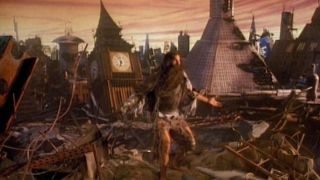
10. Army of Darkness (1992)
The movie: Long-time survivor of the Deadites Ash Williams (Bruce Campbell) travels back to medieval times to face off against another scourge of demonic beasties .
The original ending: Ash survives his historic tussle with the Deadites and harnesses the power of the Necronomicon to whisk him back to his rightful place in time. He returns to work at S-Mart, where he blows away an elderly Deadite with a shotgun and a classic one-liner.
The alternate: Served up to UK and Australian audiences as the actual ending, this time Ash is provided a potion to escort him back to the 20th century. Each drop he ingests will allow him to sleep for 100 years. He takes a massive swig and settles down for a nap. He never was one for details.
Why it's better: It makes sense as a testament to Ash's stubborn nature. Throughout the entire series he refuses to take orders and wont accept help when its offered to him. And the image of caveman Ash is simply brilliant.
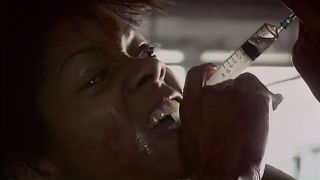
9. 28 Days Later (2002)
The movie: The world is in ruin after a virus spreads, turning people into flesh-eating zombies who are also rather gifted sprinters. Jim (Cillian Murphy) awakes in a hospital bed to a deserted London, and sets about finding comrades and staying alive...
The original ending: Major West shoots Jim, who is quickly escorted to an abandoned hospital by his two friends who go on to save his life. 28 days later he wakes from a coma and along with Selena (Naomie Harris) and Hannah (Megan Burns), constructs a help sign on the roof with the hopes of attracting attention from passing planes. All hope is not yet lost.
The alternate: Selena's impromptu surgery on Jim fails and he dies. The two women arm themselves and charge out of the hospitals swinging doors into an uncertain future.
Why it's better: Misdirection is key to this alternate ending, as audiences are led to believe that of course Jim will survive! The administering of adrenaline, the hopeful glint in Selena's eye... the good guy can't die and yet he does. It's a powerful closing that reiterates the film's central message: no-one is safe from the walking dead.
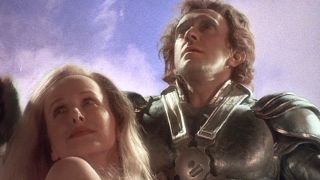
8. Brazil (1985)
The movie: Terry Gilliam's quirksome sci-fi fantasy anchored in a totalitarian regime follows Jonathan Pryce's lowly civil servant Sam Lowry, who decides to act on his daydreams involving a damsel-in-distress...
The original ending: Unhappy with Gilliam's ending, Fox tailored its own happier version that omits the downbeat end note the director had hoped for. Instead, Sam is ferried off to a blissful life by embracing the ability to fly - which he steals from his dreams - to escape the clutches of the organisation.
The alternate: Gilliam's initial conclusion was finally reinstated after the film won several awards. A darker, surreal closure to the tale it reveals that Sam never escaped at all and it still in restraints, blissfully unaware....
Why it's better: It doesn't remove the happy ending but instead includes the it was all a dream tag - itself a brilliant dig at those within the studio who had slashed away at Gilliam's first version.
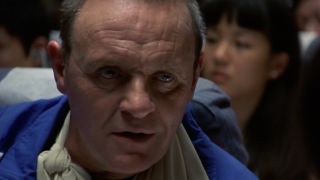
7. Hannibal (2001)
The movie: The long-awaited sequel to Silence Of The Lambs swapped out Jonathan Demme for Ridley Scott, in this deliciously gory movie about Hannibal Lecter (Anthony Hopkins)'s next adventure.
The original ending: Clarice Starling (Julianne Moore) lets Lecter kiss her as a distraction so she can handcuff him, and prevent his escape before the authorities arrive. He takes a meat cleaver, severs his hand and slips away anyway.
The alternate: Swapping out the cuffs for a longer kiss, Lecter and Starling have an even more awkward liplock before Hannibal escapes to a nearby van. This time there's no threat of restraint; Starling just lets him go. Later, the cannibal is on a plane bound for sunnier climes, discussing with a young lad, who he's just given human brains as a snack, how dangerous it is to talk to strangers.
Why it's better: The self-mutilation in the official ending doesn't remain in line with Hannibal's self-worth. Hell butcher anyone and serve em up with a chianti, but risk his own life? Nah. Plus, the fact that Starling is willing to let Lecter go? Now that's very interesting indeed.
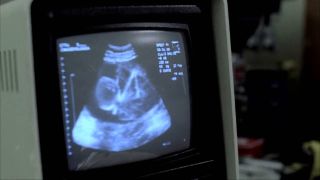
6. The Butterfly Effect (2004)
The movie: Through reading his journal Evan (Ashton Kutcher) is able to travel back through time. Unlike Back To The Future's almanac-induced series of events, Evan chooses to rewrite history to make present-day life much happier for his nearest and dearest.
The original ending: Evan time hops back to the day he first met his childhood friend and future sweetheart Kayleigh (Amy Smart). To protect her from a bleak life riddled with horrible abuse, Evan intentionally alienates her. She flees the neighbourhood and her hideous father altogether.
The alternate: Realising that his meddlesome ways have escalated way out of control, Evan travels way back and makes the decision to kill himself in utero.
Why it's better: Watching a baby in the womb strangle itself with an umbilical cord makes for some incredibly harsh - yet powerful and out of leftfield - viewing. Plus, it backs up earlier mentions of Evan's mother having suffered a glut of stillborn births. Perhaps he had several siblings who chose the same path.
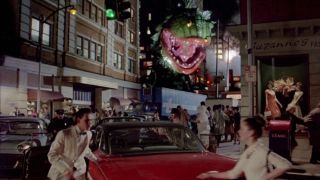
5. Little Shop of Horrors (1985)
The movie: Bumbling florist Seymour (Rick Moranis) tends to a new type of talking plant called Audrey II (Levi Stubbs) by feeding it drops of his blood. Before long, the beastly varietals hunger for human flesh leads to Seymour luring back unsuspecting innocents to the store to become a new type of Baby Bio.
The original ending: Seymour arrives back at the store just as the plant is about to consume his paramour Audrey (Ellen Greene). Revealing itself to be an extraterrestrial being set on world domination, Audrey II is killed when Seymour electrocutes it.
The alternate: Seymour fails to save Audrey, who along with Seymour, is eaten by her flowery namesake. As promised, Audrey II conquers America city-by-city, overthrows the military and proceeds to take over the entire world.
Why it's better: Seeing the bad guys win is always an unexpected pleasure. In this case its even more joyful because its a carnivorous extraterrestrial plant.
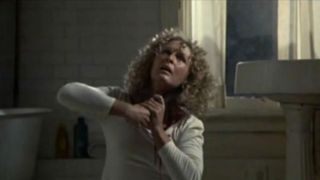
4. Fatal Attraction (1987)
The movie: The happily-married Dan (Michael Douglas) starts an illicit affair with the seductive Alex Forrest (Glenn Close). When she's not trying to yank him away from his loving family, she also hammers home her intent by seducing bunny rabbits into saucepans of boiling water.
The original ending: Alex goes full-on crackers and attempts to kill Dan. He chokes her in his bathtub. But... she's not really dead! Lurching out of the tub to have her revenge, Alex gets plugged full of lead by Dan's faithful wife Beth (Anne Archer).
The alternate: Alex still perishes, but not as the result of Beth's sharp-shooter action. In Adrian Lyne's alternate version, preferred by Close, Alex commits suicide and frames Dan for her death. While Beth uncovers a cassette suggesting his innocence, poor Danny boy still winds up in the slammer.
Why it's better: Dan is issued one helluva wake-up call for his indiscretions, instead of being welcomed back into the warm embrace of his family. Sure, maybe prison was a tad harsh, but he'll never have wandering eyes again...
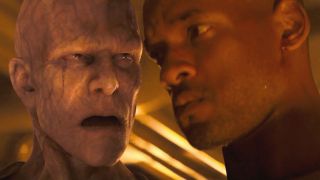
3. I Am Legend (2007)
The movie: Will Smiths super-buff scientist Robert Neville lives in the remnants of New York City after a virus grips the city which transforms humans into rabid, yabbering monsters. Holed up in his swish loft, he vies to discover a vaccine through a series of experiments.
The original ending: Under attack from a swarm of darkseekers who break into his home laboratory, Robert ushers two friends carrying the cure to safety before blowing himself - and the monsters - to smithereens.
The alternate: Putting aside his homemade bomb, Robert actually talks to the beasts, who, it turns out, aren't really all that bad. Their sole reason for a light bit of B&E was to recover their friend, a darkseeker whom Robert had been mercilessly experimenting on throughout the movie. It also reveals the backstory for the movies title, as Robert is dubbed a legend amongst darkseekers. Albeit a terrifying one who kills them without remorse.
Why it's better: A darker, juicier denouement than the original, it flies in the face of traditional studio sentimentality. Plus, its a nice touch to have the hero turn out to be the bad guy, all because of some deviously restricted narration.
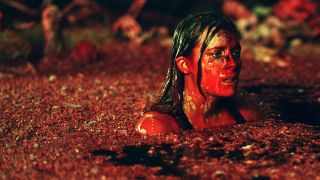
2. The Descent (2005)
The movie: A bunch of old friends embark on a weekend of pot-holing in an uncharted system of caves. Its not long until they realise they're being hunted in the claustrophobic tunnels by a flesh-eating race of humanoids descended from a previous party.
The original ending: Depending on which version you've seen, UK or US, the original and alternate tags are interchangeable. However, bearing in mind the existence of a sequel, for argument's sake well refer to the American ending as the original.
After skewering Juno (Natalie Mendoza) in the leg and leaving her to die (well, she did cheat on her husband), Sarah (Shauna Macdonald) scrambles up a mountain of bones, escapes the cave and makes it to the car. Speeding down the road, she pulls over to vomit and sits back up to see Juno's ghost in the passenger seat. She screams.
The alternate: Same as the above, except UK audiences were granted a much, much darker final sequence afterwards. Sarah's scream jars her awake, as the shot cuts to her lying on the floor of the cave. She didn't escape. The hallucinations begin rather quickly after that.
Why it's better: Theres nary a Descent fan out there who doesn't prefer the alternate ending. It's a dark macabre tease, manipulating audience perception through the restriction of Sarah's experience.
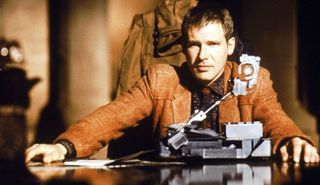
1. Blade Runner (1982)
The movie: Ridley Scott's sci-fi masterpiece follows Rick Deckard (Harrison Ford), an LAPD cop tasked with tracking down and wiping out replicants - androids banned from Earth.
The original ending: A series of dreamy mountainous shots unfold as Ford's intoned narration wraps up the story. The final shot sees a sun-dappled Deckard and Rachel (Sean Young) drive off into the sunset.
The alternate: The pair hurriedly exit Rachel's apartment, pile into the elevator and the screen cuts to black.
Why it's better: Scott's re-instated ending - which he originally intended to use all along - offers a far more rewarding conclusion that remains loyal to the tone of the entire flick. The sight of Deckard and Rachel facing an unknown future is a more intriguing way to send off this cult classic pair.

Gem Seddon is 12DOVE's west coast Entertainment News Reporter, working to keep all of you updated on all of the latest and greatest movies and shows on streaming platforms like Netflix and Amazon Prime. Outside of entertainment journalism, Gem can frequently be found writing about the alternative health and wellness industry, and obsessing over all things Aliens and Terminator on Twitter.
